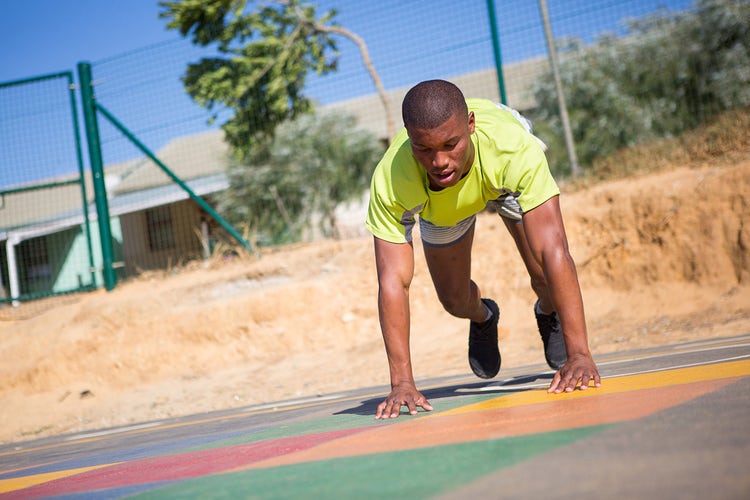Mind Over Muscle

For many gym workouts, Monday is chest day, but why not flex even more muscle by making it brain day? Duh! Your brain is a muscle, too! Are you scratching your head? Ponder this … working out can give you a bigger brain.
Your best asset—your brain
Next to your glutes, your brain can be your biggest muscle (Sorry, Bret Contreras!). The structure of your brain determines how it works and the stuff in the gray matter matters, too. Get it? Gray matters! Gray matter contains most of your brain cells. This part of the brain controls the function of your muscles, sight, hearing, speech, decision-making, memory, emotions and self-control.
Atrophy or shrinking of gray matter begins at about age 30. I know! That’s young! The hippocampus is responsible for your learning and memory. The size of the hippocampus gets smaller at 1 to 2 percent per year as you age. It’s no wonder you sometimes walk into a room forgetting what you were supposed to do or misplace your keys! The thicker your brain, the less you’ll suffer from age-related dementia. So really, it’s OK to become thick-headed as you age.
Get in touch with your BFFs
You’re born with a predetermined number of brain cells. Don’t worry about it. You can grow new brain cells. Making BDNF (brain-derived neurotrophic factor), IGF-1 (insulin-like growth factor 1) and VEGF (vascular endothelial growth factor), your BFFs help in making new brain cells called neurogenesis and new blood vessels called angiogenesis.
IGF-1 and VEGF circulate when you exercise, forming new brain cells and blood vessels, which causes thickening of your gray matter. Hence, executive functioning like processing and reacting to new information, solving problems and organizing improves.
BDNF is especially important in maintaining a healthy brain. Alzheimer’s disease and dementia patients measure at extremely low or zero levels of BDNF.
Flex it!
Even though your brain gets smaller as you get older, it’s like most muscles … you can flex it. Yes, crossword puzzles and memory games work, too, yet studies show physical activity increases BDNF, IGF-1 and VEGF levels at greater rates. Neuroplasticity or remodeling of the brain happens when you exercise. The level of neuroplasticity all depends on the type, intensity and duration of exercises. Strategize in increasing VEGF, IGF-1, gray matter and BDNF. Here are the moving parts:

Dance
Dancing increases more gray matter compared to fitness exercises such as running, cycling and weight training. Dancing keeps your BDNF levels high even after you’ve stopped dancing. Busting a move requires moving in different planes of motion at different intensities. You’re performing movements across your body, strengthening the connection between the right and left sides of your brain. Go ahead and do your best sprinkler! Have a little hip-hop fun and salsa dance the night away!
Yoga
There’s mindfulness to yoga. Yoga reduces stress levels. A study of daily yoga practice found that BDNF levels increased three times more and remained elevated. There’s also an inverse relationship between BDNF and stress. If you’re stressed out, BDNF levels will remain lower and won’t increase as much. So a little namaste will do you good!


Cardio
Calling all cardio junkies! “Zoning out” during a long run or a brisk walk for about 30 minutes or more gets a lot of VEGF going through your bloodstream. More VEGF is like “vegging out,” causing more angiogenesis, or formation of new blood vessels. Gray matter grows whether it’s at a moderate or low intensity. Longer and harder runs grow BDNF levels at a faster rate. This is actually where “zoning out” may get you a bigger brain! Go on and “VEGF out”!
Resistance Training
Lifting heavy weights with long recovery between sets or moderately heavy weights with not as much recovery increases your VEGF, IGF-1 and BDNF during your workout. BDNF levels tend to drop after your workout. However, IGF-1 levels remain elevated after your workout, even for a few weeks afterward. Yes, be a “musclehead” and pump that iron!


HIIT
If your body is ready, HIIT hard! High-intensity interval training increases BDNF levels at higher rates compared to continuous aerobic exercise. HIIT workouts are efficient: Doing 20 to 30 minutes of HIIT will give you more BDNF than 20 to 30 minutes of moderate- or low-intensity cardio. Keeping in mind that for health reasons, HIIT workouts are recommended only twice per week. HIIT already stresses your body, so if you’re really stressed out with other things, you won’t reap the maximum benefits of increasing BDNF levels. Come on, HIIT it with your best shot!
It really isn’t rocket science. Just make sure your body is physiologically ready and you’re progressively training and maintaining your body acuity—that’s listening to your body. Pick your exercise and you can have brains and brawn.
Video credit: PeopleImages, Getty Images
Photo credit: FlamingoImages, Getty Images; filadendron, Getty Images; fizkes, Getty Images; vadimguzhva, Getty Images; FlamingoImages, Getty Images; nattrass, Getty Images